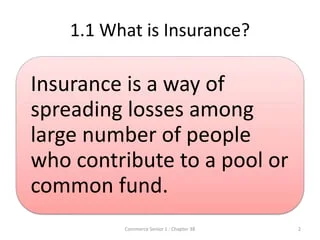Little Known Questions About Pacific Prime.
Table of ContentsSee This Report on Pacific PrimeAbout Pacific PrimeThe smart Trick of Pacific Prime That Nobody is DiscussingThe 9-Second Trick For Pacific PrimeNot known Incorrect Statements About Pacific Prime

This is because the information were collected for a duration of strong financial efficiency. Of the approximated 42 million people who were without insurance, almost concerning 420,000 (about 1 percent) were under 65 years of age, the age at which most Americans come to be eligible for Medicare; 32 million were adults between ages 18 and 65, about 19 percent of all adults in this age; and 10 million were children under 18 years of age, regarding 13.9 percent of all youngsters (Mills, 2000).
These estimates of the number of individuals without insurance are generated from the annual March Supplement to the Present Populace Study (CPS), conducted by the Census Bureau. Unless or else kept in mind, nationwide estimates of people without medical insurance and proportions of the population with different type of insurance coverage are based upon the CPS, one of the most widely used source of quotes of insurance coverage and uninsurance rates.
More About Pacific Prime

Still, the CPS is particularly beneficial since it creates annual price quotes reasonably swiftly, reporting the previous year's insurance policy coverage approximates each September, and since it is the basis for a constant set of estimates for even more than twenty years, permitting analysis of fads in protection with time. For these factors, in addition to the extensive usage of the CPS in various other studies of insurance policy protection that exist in this record, we depend on CPS estimates, with constraints kept in mind.

The price quote of the number of without insurance people increases when a population's insurance coverage standing is tracked for a number of years. Over a three-year duration beginning early in 1993, 72 million people, 29 percent of the U.S. https://www.goodreads.com/user/show/177010401-freddy-smith. populace, were without insurance coverage for a minimum of one month. Within a single year (1994 ), 53 million individuals experienced at the very least a month without insurance coverage (Bennefield, 1998a)
6 out of every 10 without insurance adults are themselves used. Working does improve the probability that one and one's family participants will have insurance policy, it is not an assurance. Even members of families with 2 full-time wage income earners have almost a one-in-ten possibility of being uninsured (9.1 percent uninsured price) (Hoffman and Pohl, 2000).
Things about Pacific Prime
New immigrants account for a significant proportion of individuals without medical insurance. One evaluation has actually attributed a significant part of the current development in the size of the U.S. uninsured population to immigrants who got here in the nation in between 1994 and 1998 (Camarota and Edwards, 2000). Recent immigrants (those who concerned the United States within the past four years) do have a high rate of being uninsured (46 percent), yet they and their children represent just 6 percent of those without insurance coverage across the country (Holahan et al., 2001).
The partnership in between medical insurance and access to care is well established, as documented later in this chapter. The partnership in between health and wellness insurance coverage and health end results is neither straight neither easy, a comprehensive clinical and wellness solutions research study literature web links health and wellness insurance policy coverage to better access to care, far better high quality, and boosted individual and population wellness condition.
Degrees of analysis for checking best site out the impacts of uninsurance. It concentrates specifically on those without any kind of health insurance coverage for any length of time.
The Buzz on Pacific Prime
The issues faced by the underinsured are in some areas similar to those dealt with by the without insurance, although they are typically much less severe. Wellness insurance policy, nevertheless, is neither necessary neither adequate to gain accessibility to medical solutions. The independent and direct result of health insurance policy coverage on accessibility to health and wellness services is well developed.
Others will acquire the health treatment they need also without medical insurance, by spending for it out of pocket or seeking it from companies who use care complimentary or at highly subsidized prices. For still others, medical insurance alone does not guarantee invoice of care since of other nonfinancial barriers, such as an absence of healthcare service providers in their area, limited access to transport, illiteracy, or linguistic and social distinctions.
The 2-Minute Rule for Pacific Prime
Official study about uninsured populations in the USA dates to the late 1920s and early 1930s when the Committee on the Cost of Healthcare created a collection of records regarding financing physician workplace gos to and hospitalizations. This issue ended up being prominent as the numbers of medically indigent climbed throughout the Great Depression.